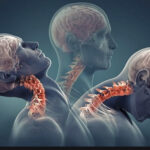
Creative Strategies in Weight Loss Counseling to Break Plateaus
October 2, 2025
The Importance Of Early Intervention In Neck Injury Cases
October 3, 2025When sleep is repeatedly disrupted, the effects may extend into waking hours, influencing mood, energy levels, and overall well-being. A common source of such disruption is sleep apnea, a condition that can have far-reaching effects on an individual’s daily functioning and health. Understanding its nature, recognizing its signs, and knowing the available management approaches are the first steps toward addressing its impact.
What Is Sleep Apnea?
Sleep apnea is a sleep-related breathing disorder characterized by repeated pauses in breathing during sleep. These interruptions, which can occur hundreds of times per night, result in brief awakenings as the body struggles to restore normal breathing. These awakenings are often so short that the person does not recall them upon waking, yet they prevent the deep, restorative sleep necessary for optimal health.
There are three main types of apnea. Obstructive sleep apnea (OSA) is the most common form, occurring when the muscles in the back of the throat relax and physically block the airway. Central sleep apnea (CSA) happens when the brain fails to send the proper signals to the muscles that control breathing. A third type, known as complex sleep apnea, is a combination of both obstructive and central apnea. This fragmentation of sleep may lead to significant consequences for daily life, even if the individual is unaware of the nightly events.
What Are Its Effects?
The signs of this condition can manifest both during the night and throughout the day. Because many symptoms occur during sleep, a bed partner is often the first to notice them. Daytime symptoms may be subtle at first but may become more pronounced as the condition progresses. Common indicators include:
- Loud, persistent snoring
- Observed episodes of stopped breathing during sleep
- Waking up with a dry mouth
- Morning headaches
- Excessive daytime sleepiness, even after a full night in bed
- Feelings of irritability
These symptoms may significantly impact a person’s quality of life in various ways beyond sleep quality.
How Is It Treated?
Management of apnea is tailored to the individual and the specific type and severity of their condition. The goal of any approach is to normalize breathing during sleep, thereby improving sleep quality and reducing daytime symptoms. Approaches may include:
- Lifestyle Adjustments: For some individuals, certain lifestyle modifications can lessen symptoms. These might involve avoiding alcohol before bedtime or changing sleep positions to prevent sleeping on the back.
- Oral Appliances: Custom-fitted oral appliances are another option. These devices are worn during sleep and work by shifting the lower jaw forward, helping to keep the airway open.
- Clinician-Guided Therapies: Different types of devices are available to suit individual needs and comfort levels.
A qualified healthcare provider can help determine the most suitable path forward based on a comprehensive evaluation.
Confer With a Specialist
Sleep apnea is a complex condition with effects that can permeate every aspect of daily life, from morning alertness to evening interactions. Because the symptoms may overlap with other conditions, obtaining an accurate assessment is a necessary part of the process. If you experience symptoms associated with apnea, consulting a professional is recommended. Sleep physicians and dentists trained in sleep-related breathing disorders can offer a thorough evaluation.
- Soutaipasu: Exploring the Unique Japanese Subculture and Fusion Cuisine
- Wollmatten Guide: Benefits, Uses, Care Tips & Buying Advice for Natural Wool Mats
- Jadeitový kameň: Účinky, využitie, druhy a kompletný sprievodca
- Escapamento RD: Guia Completo, Modelos, Desempenho e Como Escolher o Melhor para Sua RD
- Sodiceram: Benefits, Uses, Installation & Complete Guide for Homeowners




